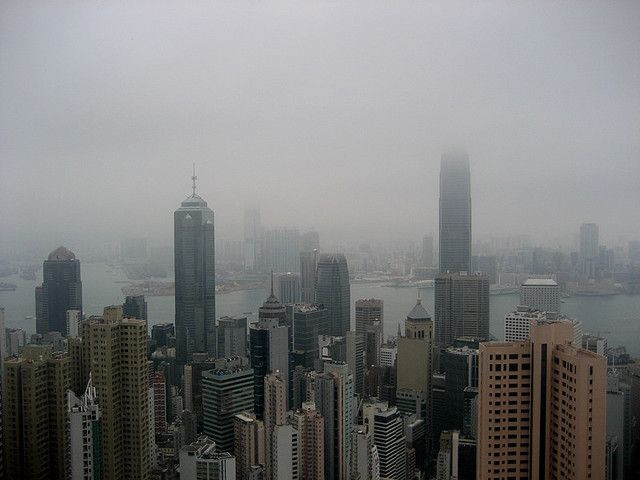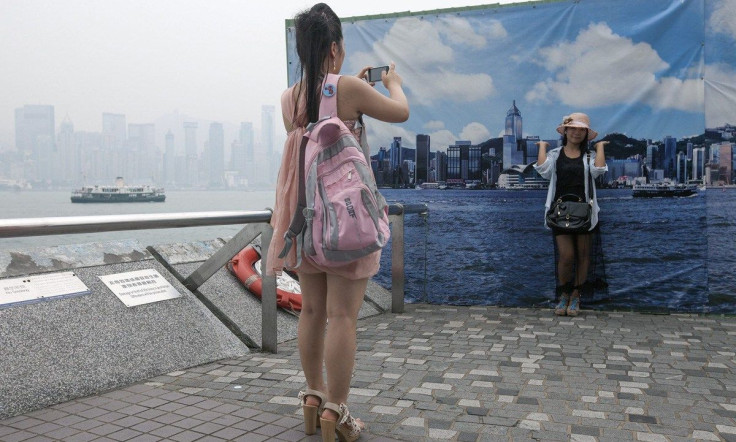Hong Kong Haze Worsens After Tropical Storm Trami; Tourists Don't Seem To Mind

Severe tropical storm Trami swept through parts of China, including Hong Kong, after hitting Taiwan with battering rains. The storm caused air pollution to rise to dangerous levels throughout Hong Kong and parts of China as still air left the smog created by factories and vehicles unmoving.
“The high air pollution incident is a result of the trapping of local pollutants, in particular nitrogen dioxide, in the territory under the light wind,” the Environmental Protection Department said in an e-mail to Bloomberg News.
The city relies on winds to carry the smog away. Visibility dropped to about 1,500 meters between 9 a.m. and 10 a.m., but were expected to pick up later in the day, The South China Morning Post reported. “Because of the typhoon, we don’t have any wind, the air now is like static, pollutants accumulate and they can’t get out,” Kwong Sum-yin, chief executive officer at Clean Air Network, a non-profit advocacy group, told Bloomberg. “Central is pretty bad, exactly because we have so many skyscrapers.”
As of 7 p.m. Thursday evening, the air-quality index in Hong Kong was at 152 and considered “unhealthy.” Earlier in the day, levels were at a much higher level, reaching 167 in Mong Kok, 184 in the Causeway Bay, and 174 in Central. A reading between 151 and 200 warns that “everyone may begin to experience health effects; members of sensitive groups may experience more serious health effects.” These sensitive groups include anyone with heart or respiratory illnesses. Beijing’s air-quality index was higher, however, reaching 200 at 7 p.m., and marked as “very unhealthy,” and warning of emergency conditions that could affect the entire population.
According to the World Health Organization, there is no “safe” level of particulate matter (PM) under which damage to health can be avoided, however, the organization estimates that reducing levels of PM from the world average of 70 micrograms per cubic meter to 20 micrograms per cubic meter, air quality related deaths will be reduced by 15 percent.
While Hong Kong continues to fight its pollution problem, which was bad before the smog brought on by Trami, it is still trying to appeal to its tourists. On a less serious note, Kotaku reports that tourists wishing to take photos along its scenic bay are now using propped up banners, with photos of the bay underneath a bright blue sky.





























